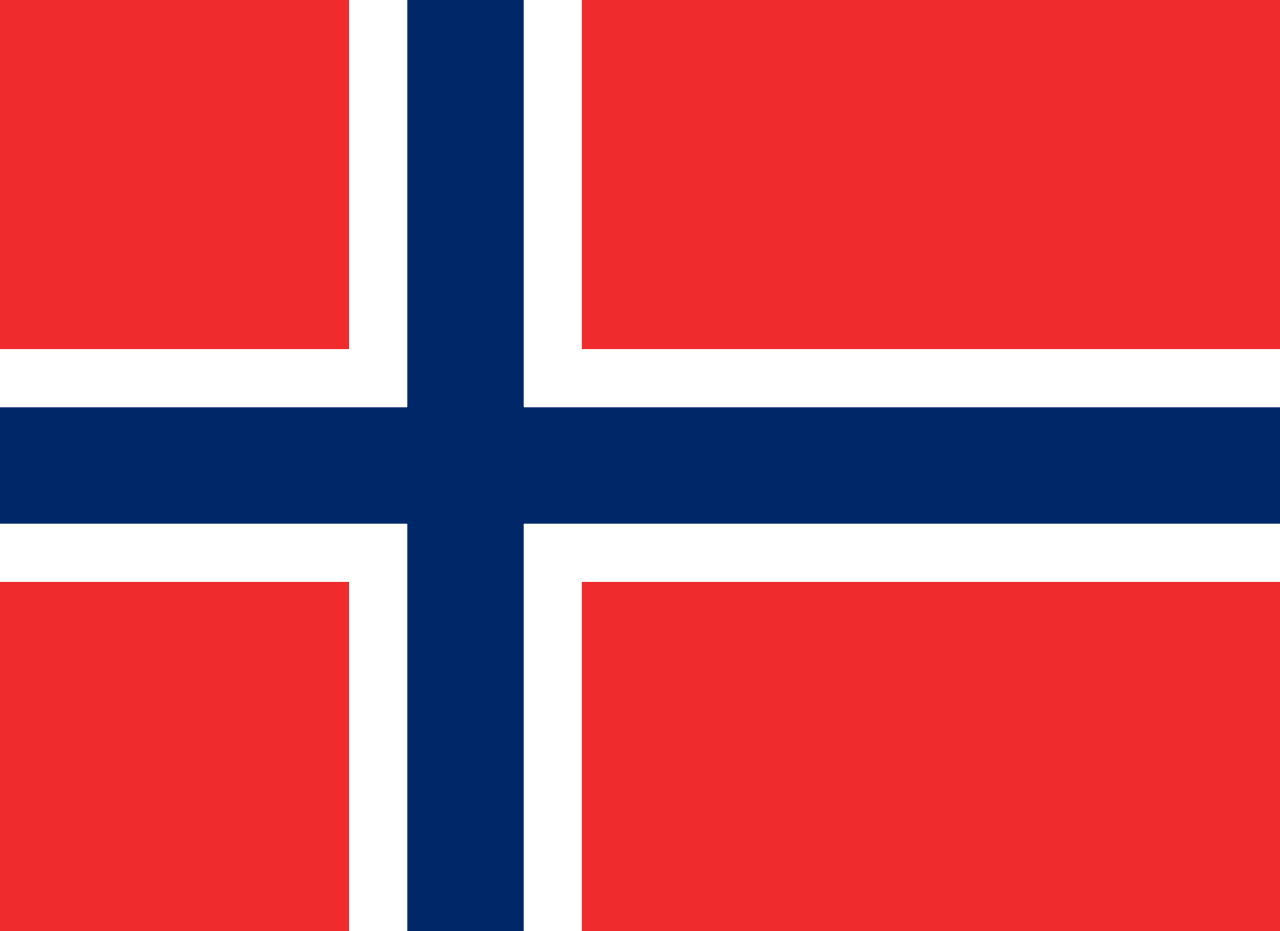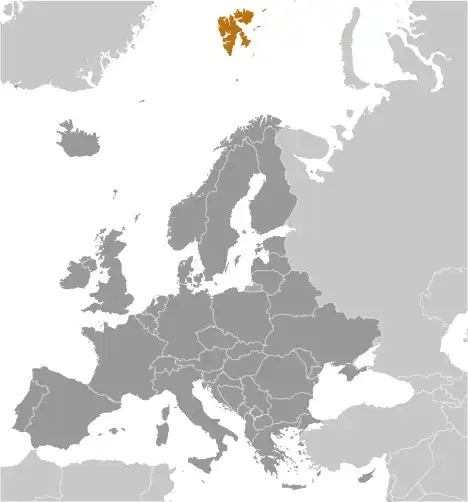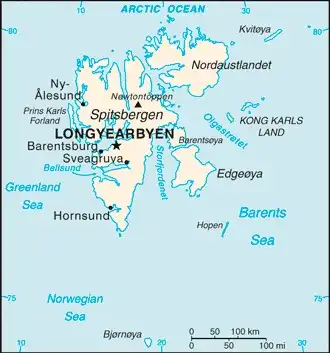
Svalbard and Jan Mayen Country Profile
Key Facts of Svalbard and Jan Mayen

| Government type: | non-self-governing territory of Norway |
| Capital: | Longyearbyen |
| Languages: | Norwegian, Russian |
Svalbard and Jan Mayen Demographic Data
Ethnic Groups in Svalbard and Jan Mayen(2021 est.)
Svalbard and Jan Mayen Economy Statistics
Economic overview of Svalbard and Jan Mayen
high-income Norwegian island economy; major coal mining, tourism, and research sectors; recently established northernmost brewery; key whaling and fishing base; home to the Global Seed Vault
Svalbard and Jan Mayen Real GDP (purchasing power parity) in Billion $
no data
Svalbard and Jan Mayen Real GDP per capita in $
No data
Geography of Svalbard and Jan Mayen
Map of Svalbard and Jan Mayen

Land and Water Distrubtion of Svalbard and Jan Mayen
Natural Resources of Svalbard and Jan Mayen
- coal ⚫
- iron ore ⛓️
- copper 🟧🪙
- zinc 🔩
- phosphate 🧪
- wildlife 🐾
- fish 🐟
Climate inSvalbard and Jan Mayen
arctic, tempered by warm North Atlantic Current; cool summers, cold winters; North Atlantic Current flows along west and north coasts of Spitsbergen, keeping water open and navigable most of the year
History of Svalbard and Jan Mayen - a Summary
Norse explorers may have first discovered the Svalbard archipelago in the 12th century. The islands served as an international whaling base during the 17th and 18th centuries. Norway's sovereignty was internationally recognized by treaty in 1920, and five years later Norway officially took over the territory. Coal mining started in the 20th century, and a Norwegian company and a Russian company are still in operation today. Travel between the settlements is accomplished with snowmobiles, aircraft, and boats.
